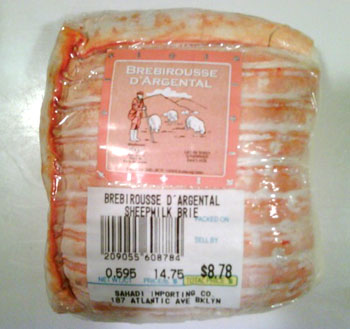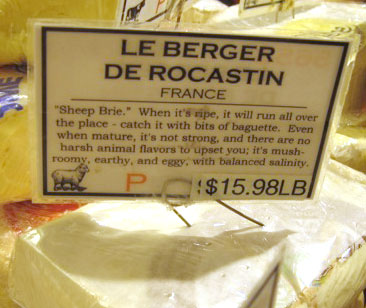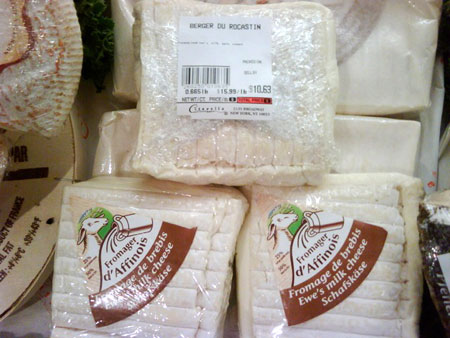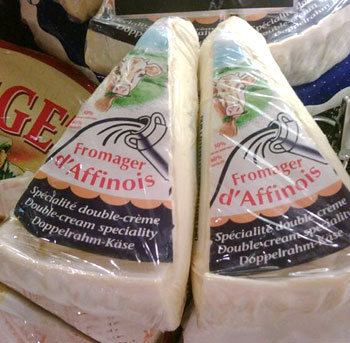 Three years ago, I walked into one of LA’s many Whole Foods stores and saw a pint box of Del Cabo Organic Cherry Tomatoes for $4.99. Wouldn’t buy those here, I thought, because Trader Joe’s always has them for $2.99. Three days later, I was in the 99¢ Only store and, I swear on a stack of tomato crates, they had the same box of cherry tomatoes for, yes…99¢. Of course you can’t possibly rely on dollar stores for your grocery needs, because their stock is limited, constantly changing, and rarely of the Del Cabo quality. But finding these upscale tomatoes at the discount store where I go to buy gift bags and sink stoppers really drove home the point that prices for the same foods can vary wildly depending on where you shop.
Three years ago, I walked into one of LA’s many Whole Foods stores and saw a pint box of Del Cabo Organic Cherry Tomatoes for $4.99. Wouldn’t buy those here, I thought, because Trader Joe’s always has them for $2.99. Three days later, I was in the 99¢ Only store and, I swear on a stack of tomato crates, they had the same box of cherry tomatoes for, yes…99¢. Of course you can’t possibly rely on dollar stores for your grocery needs, because their stock is limited, constantly changing, and rarely of the Del Cabo quality. But finding these upscale tomatoes at the discount store where I go to buy gift bags and sink stoppers really drove home the point that prices for the same foods can vary wildly depending on where you shop.
Soon after this accidental lesson in comparative pricing, something else happened which cemented my conviction that shopping around can pay significant dividends, especially if you’re on a fixed budget:
I had a delicious sheep’s milk brie, called Brebirousse d’Argental, at a friend’s party, so I asked where he’d bought it. The answer was a local, artisanal cheese shop, the only one for miles and miles. I drove there the next day, but when they said the Brebirousse cost $48 a pound, I nearly choked. (“I’m sorry,” I thought, “did I say caviar? I meant cheese.”) I left the store empty-handed but determined to find this oozy, aromatic mass at a price I could afford. And I should say that I really enjoy this kind of a challenge; it’s a treasure hunt to me.
The next day, my search began with a call to LA’s Silver Lake Cheese Shop: $44 a pound. Then I called The Beverly Hills Cheese Store: $37.50 a pound. Then I went on line and found a place in Newport Beach that was willing to send me a pound over night for $33, shipping included. Now this was starting to get interesting! Determined to learn more about the cheese and get a comprehensive picture of the price differences, I called the celebrated Murray’s Cheese Shop in New York, where it was $22 a pound, less than half of where I started. Of course, Murray’s was clear across the country, so that wasn’t a big help, but I wondered why there was such a huge difference between Los Angeles and New York. I was certain that it couldn’t be the extra 3,000 miles the cheese had to travel, because I pay the same price in LA as I do in NY for 99% of the imported foods and wines I buy, despite their trans-continental trek.
 A few weeks later, I was in NY and went to visit the new Fairway store in Paramus, NJ, not far from where my mother lives. (I have a minor disorder, not unknown to New Yorkers, called Fairway-itis: in the next 36 hours, I was also in their Harlem, Upper West Side, and Red Hook, Brooklyn stores.) Despite their wondrous cheese department, they didn’t have the Brebirousse, which surprised me. Then, in a moment of sheer kismet, I ran into my friend Steve Jenkins, who is not only a Fairway partner but is also the author of the definitive “Cheese Primer.” And he was the first American inducted into the French Guilde des Fromagers. ‘Nuff said, Steve’s the man. I asked him if they carried the cheese, and he scrunched up his face. “Never heard of it,” he said. We were both slightly discomfited by this, for obvious reasons.
A few weeks later, I was in NY and went to visit the new Fairway store in Paramus, NJ, not far from where my mother lives. (I have a minor disorder, not unknown to New Yorkers, called Fairway-itis: in the next 36 hours, I was also in their Harlem, Upper West Side, and Red Hook, Brooklyn stores.) Despite their wondrous cheese department, they didn’t have the Brebirousse, which surprised me. Then, in a moment of sheer kismet, I ran into my friend Steve Jenkins, who is not only a Fairway partner but is also the author of the definitive “Cheese Primer.” And he was the first American inducted into the French Guilde des Fromagers. ‘Nuff said, Steve’s the man. I asked him if they carried the cheese, and he scrunched up his face. “Never heard of it,” he said. We were both slightly discomfited by this, for obvious reasons.
Off he went to his computer and came back a few minutes later, looking much relieved. “We have it,” he said with a grin, “just under a different name - Berger de Rocastin.” It was round, had a white rind, and was twice the height of the square, washed red rind Brebirousse. Though it didn’t look identical, the soft, sensuous, sheepy brie tasted identical, and I was thrilled. It was also $18 a pound. Another name, a very low price. Thank you, Steve! Now my curiosity was really piqued, and once back in LA, I went into full-throttle research mode.
 I got an amazing amount of misinformation from several famous cheese shops around the country about where the cheese was manufactured and by whom, but I’ll spare you those details. Ultimately, I determined that it was made by the Guilloteau dairy near Lyon, France. I then tracked down the U.S distribution rep to confirm the details, and she told me this: Brebirousse d’Argental is indeed made by Guilloteau, but the name, shape and washed red rind are exclusive to Fromi, a distributor just south of Paris. But Guilloteau sells the taller, white rind version under several names of their own, including Berger de Rocastin and Fromager d’Affinois de Brebis (with a sheep’s head on the label). Knowing this made my chances of finding it much easier. On my next trip to to NY, I found the Berger de Rocastin at Whole Foods for $20 a pound and at Zabar’s and Citarella for $16 – wow. And then I truly hit the jackpot when I walked into Sahadi’s in Brooklyn (one of my favorite markets ever), where they carried the Brebirousse label for $14.75 a pound. Bingo, less than 1/3 the price of that first shop in LA!
I got an amazing amount of misinformation from several famous cheese shops around the country about where the cheese was manufactured and by whom, but I’ll spare you those details. Ultimately, I determined that it was made by the Guilloteau dairy near Lyon, France. I then tracked down the U.S distribution rep to confirm the details, and she told me this: Brebirousse d’Argental is indeed made by Guilloteau, but the name, shape and washed red rind are exclusive to Fromi, a distributor just south of Paris. But Guilloteau sells the taller, white rind version under several names of their own, including Berger de Rocastin and Fromager d’Affinois de Brebis (with a sheep’s head on the label). Knowing this made my chances of finding it much easier. On my next trip to to NY, I found the Berger de Rocastin at Whole Foods for $20 a pound and at Zabar’s and Citarella for $16 – wow. And then I truly hit the jackpot when I walked into Sahadi’s in Brooklyn (one of my favorite markets ever), where they carried the Brebirousse label for $14.75 a pound. Bingo, less than 1/3 the price of that first shop in LA!
 Today, three years later, regardless of which name is on the label, the cheese is much easier to find, and the price differential is much smaller – from $16 on the low end to $30 (at the cheese store where this journey began). Whole Foods on both coasts often has both labels, usually for $20 to $22. And if all else fails, Guilloteau makes a widely available cow’s milk sibling, simply called Fromager d’Affinois (you’ll see a cow’s head on the label, rather than a sheep’s). It’s tamer than the sheep’s milk variety, but still gooey and very pleasing, and it’s usually around $14 a pound.
Today, three years later, regardless of which name is on the label, the cheese is much easier to find, and the price differential is much smaller – from $16 on the low end to $30 (at the cheese store where this journey began). Whole Foods on both coasts often has both labels, usually for $20 to $22. And if all else fails, Guilloteau makes a widely available cow’s milk sibling, simply called Fromager d’Affinois (you’ll see a cow’s head on the label, rather than a sheep’s). It’s tamer than the sheep’s milk variety, but still gooey and very pleasing, and it’s usually around $14 a pound.
As a consumer, I get a kick out of digging for information that helps me understand the supply chain a bit; plus I have the time, energy and curiosity to do it. But I know that most people don’t, so for me the moral of the story boils down to this: sometimes you have to buy it where you see it, when you see it – but at other times, it pays to shop around.
Ilene Amy Berg (aka The Berger Queen) is a Los Angeles-based television producer, antiques hunter, New York and London lover, and a spirited food adventuress.
